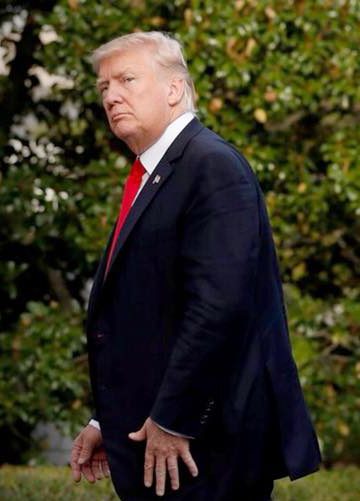
OTTAWA — America’s allies will have to pay their share of a new missile-detection system, U.S. President Donald Trump said Thursday.
That likely includes Canada, which might also be forced to reconsider its decision to stay out of an American-led effort to shoot down incoming attacks.
Trump revealed his vision Thursday following a U.S. military review of the threat posed by Russian, Chinese, North Korean and Iranian missiles — and the ways to counter such threats.
The final report had been highly anticipated in Ottawa as Canada and the U.S. prepare to launch discussions about upgrading North America’s aging early-warning system to protect against attacks that use more advanced technology.
The North American Aerospace Defence Command, or Norad, is currently configured to detect incoming ballistic missiles and foreign aircraft such as bombers, but not threats such as cruise and hypersonic missiles.
Both Trump and the U.S. military report put a heavy emphasis on space-based sensors and defences to detect, track and ultimately stop missile attacks against the U.S. and its allies from anywhere in the world.
“We will recognize that space is a new warfighting domain,” Trump told dozens of U.S. military personnel during an event at the Pentagon.
“My upcoming budget will invest in a space-based missile defence layer. It’s new technology. It’s ultimately going to be a very, very big part of our defence and, obviously, of our offence.”
The president and the report also underscored the importance of being able to defend against attacks with interceptors like those employed by the U.S. ballistic-missile defence shield, which Canada famously opted not to join in 2005.
Defence Minister Harjit Sajjan’s spokeswoman Byrne Furlong said the government remains committed to working with the U.S. through Norad, even as officials were scrambling to understand what Trump’s plan means for Canada.
“Norad remains the cornerstone of our defence relations with the United States,” Furlong said in an email. “Canada will continue to work with the United States to look broadly at emerging threats and perils to North America, across all domains, as part of the modernization of Norad.”
The report does mention Canada, revealing without offering any details that Norad is “pursuing a three-phase plan to improve the defense against cruise missiles for the United States and Canada.”
In general, ballistic missiles are aimed precisely and fired from ground level, in some cases rising high enough to leave the earth’s atmosphere before falling on their targets. Cruise missiles fly lower and straighter and are typically powered and guided most of the way, making them more difficult to intercept.
Hypersonic missiles are even newer technology, whose special threat is their extreme speed compared with older devices.
“NORAD and the U.S. Air Force are upgrading aircraft that monitor the U.S. airspace with new sensors capable of tracking and targeting challenging offensive air threats like advanced cruise missiles,” the new American report says.
Trump’s plan raises some clear questions that the Canadian government will have to address.
Those include the extent to which Canada would participate in a space-based system and whether it will reverse its previous decision not to participate in missile defence as the U.S. looks to expand it for other threats.
There will also be the question of price, with Trump underscoring during his comments both the importance of working with allies to protect against missile threats and the need for them to shoulder their share of the costs.
The reality is that Canada has been out of step with the U.S. on missile defence for years, said Anessa Kimball, an expert on North American defence at Laval University in Quebec City, and must now make some tough decisions.
That starts with deciding whether Norad remains the best organization for the job and balancing Canada’s defence obligations, concerns about the weaponization of space, American pressure and expectations and public opinion.
Trump’s unpredictability and the vagaries of U.S. politics raise questions about how much of the strategy will come to fruition.
“But from what we see from the Americans, they’re going full steam ahead,” said Kimball. “They have a vision of what it is, and so Canada really has to kind of make the decision on if they’re getting on the train or not.”